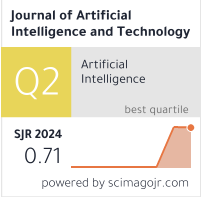Classification of Breast Masses Using Ultrasound Images by Approaching GAN, Transfer Learning, and Deep Learning Techniques
DOI:
https://doi.org/10.37965/jait.2023.0175Keywords:
breast masses, breast ultrasound, transfer learning (TL), generative adversarial network (GAN), deep learning, fully connected convolutionAbstract
Breast cancer is a common cause of death among women worldwide. Ultrasonic imaging is a valuable diagnostic tool in breast cancer detection. However, the accuracy of computer-aided diagnosis systems for breast cancer classification is limited due to the lack of well-annotated datasets. This study proposes a deep learning (DL)-based framework for breast mass classification using ultrasound images, which incorporates a novel data augmentation technique, generative adversarial network (GAN), and transfer learning (TL). Automating early tumor identification and classification in breast cancer diagnosis can save lives by improving the accuracy of diagnoses and reducing the need for invasive procedures. However, the limited availability of wellannotated datasets for ultrasound images of breast cancer has hampered the development of accurate computer-aided diagnosis systems. The accuracy of breast mass classification using ultrasound images is limited due to the lack of well-annotated datasets. Conventional data augmentation techniques have limitations in applications with strict guidelines, such as medical datasets. Therefore, there is a need to develop a novel data augmentation technique to improve the accuracy of breast mass classification using ultrasound images. The proposed framework can be extended to other medical imaging applications, where the availability of well-annotated datasets is limited. The GAN-based data augmentation technique and TL-based feature extraction can be used to improve the accuracy of classification models in other medical imaging applications. Additionally, the proposed framework can be used to develop accurate computer-aided diagnosis systems for breast cancer detection in clinical settings. The proposed framework incorporates a DL-based approach for breast mass classification using ultrasound images. The framework includes a GAN-based data augmentation technique and TL for feature extraction. The dataset used for training and testing the model is the breast ultrasound images (BUSI) dataset, which includes 1311 images with normal and abnormal breast masses. The proposed framework achieved an accuracy of 99.6% for breast mass classification using ultrasound images, which outperformed existing methods. The GAN-based data augmentation technique and TL-based feature extraction improved the accuracy of the classification model. The results suggest that DL algorithms can be effectively applied for breast ultrasound categorization. The proposed framework presents a novel approach for breast mass classification using ultrasound images, which incorporates a GAN-based data augmentation technique and TL-based feature extraction. The results demonstrate that the proposed framework outperforms existing methods and achieves high accuracy in breast mass classification using ultrasound images. This framework can be useful for developing accurate computer-aided diagnosis systems for breast cancer detection.
Metrics
Published
How to Cite
Issue
Section
License
Copyright (c) 2023 Authors

This work is licensed under a Creative Commons Attribution 4.0 International License.





